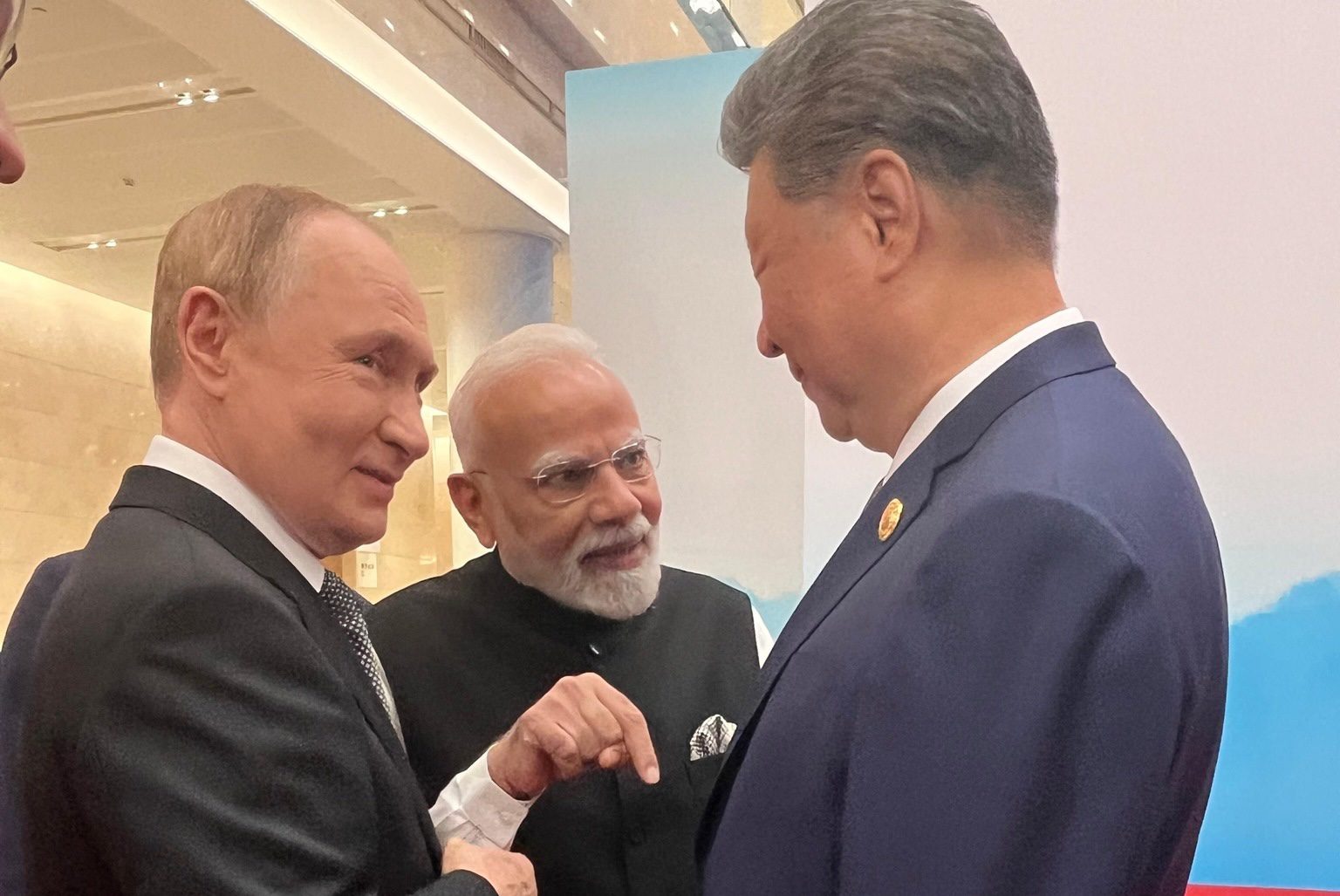The BGA India team, led by Managing Director Anuj Gupta, wrote an update about India’s outreach to Japan and China in a time of trade uncertainty.
India remains steadfast in pursuing an agile foreign policy amid a turbulent trade environment marked by the imposition of 50 percent U.S. tariffs. Prime Minister Narendra Modi has sought to strengthen ties with Japan, a long-standing partner, while initiating a measured diplomatic engagement with China. Modi’s visit to Tokyo deepens existing cooperation in the economic, technological and security domains, building upon a robust foundation laid down two decades ago. Concurrently, his participation in the Shanghai Cooperation Organization (SCO) summit in China signals a rare and timely thaw in bilateral relations, hinting at a strategic shift in regional diplomacy.
Modi’s visit to Japan from August 29-30 reaffirmed Japan’s enduring role as a key partner to India’s developmental trajectory and strategic orientation within the Indo-Pacific. Japan August 29 committed to invest $68 billion in India over the next decade. Japanese Prime Minister Shigeru Ishiba emphasized India’s vast talent potential in sectors such as semiconductors, rare earths, digital technology and clean energy, which are all central to building New Delhi’s supply chain resilience.
Modi’s participation in the SCO summit signals a measured thaw in India-China relations, building upon the groundwork laid by the 2024 deescalation agreement and the Chinese foreign minister’s recent New Delhi visit. In his bilateral meeting with Chinese President Xi Jinping, Modi welcomed the resumption of border management talks and direct flights as well as the easing of tourist visas, emphasizing cooperation for the benefit of 2.8 billion people. Xi underscored the need to view each other as “partners, not rivals” and proposed a four-point framework to deepen cooperation, all of which Modi welcomed.
Context
Tokyo: India-Japan Summit 2025
- The India-Japan summit culminated in the unveiling of a “Joint Vision 2035,” outlining a roadmap for bilateral cooperation over the next decade. This framework spans defense, clean energy, space and emerging technologies, reinforcing the strategic alignment between the two countries. Both leaders reaffirmed their commitment to the Quadrilateral Security Dialogue (the “Quad”) partnership — which includes the United States and Australia — as a cornerstone of their Indo-Pacific strategy. Without directly naming China, the joint statement expressed concern about rising tensions in the East and South China Seas and advocated for a free, open and rules-based Indo-Pacific.
Tianjin: Modi at SCO Summit 2025
- Modi and Xi held a key bilateral meeting August 31 focused on maintaining border peace and advancing strategic autonomy. Both leaders stressed the importance of moving beyond disputes to collaborate in mutually beneficial areas. Xi proposed a four-point framework — enhancing communication, deepening cooperation, strengthening multilateralism and respecting each other’s concerns — which echoes the principles of the 1954 Panchsheel Agreement. Modi also met Cai Qi, member of the Politburo Standing Committee and Xi’s chief of staff, further consolidating ties
Significance
Tokyo
- Modi and Ishiba underscored the synergy between Japanese technological expertise and India’s vast talent pool, calling it a “winning combination” for innovation and growth. Their remarks reinforce the findings of the 2024 Japan Bank of International Cooperation survey, which ranked India as the top investment destination for the third consecutive year, reflecting a significant shift in investor sentiment. The leaders also announced plans to facilitate the movement of half a million workers and students between the two countries over the next five years, aiming to tackle Japan’s demographic challenges while leveraging India’s youthful workforce to support industrial and technological expansion
Tianjin
- While India has historically considered the SCO to be of limited strategic value — primarily due to Pakistan’s membership and the bloc’s China-centric orientation — Modi’s presence this year carried new weight. With the United States imposing steep tariffs and questioning India’s energy ties with Russia, the summit offered New Delhi a timely platform to reassert its continental relevance and engage directly with both China and Russia. Modi also held a crucial bilateral meeting with Russian President Vladimir Putin to reaffirm the “special and privileged” partnership that the two countries share.
- Modi’s address at the SCO summit condemned terrorism, with a pointed reference to the Pahalgam terror attack in Jammu and Kashmir in April. His remarks led to a significant diplomatic win for India, as the Tianjin Declaration — adopted by all SCO member states — called for the perpetrators to be brought to justice. He also reiterated India’s vision for the SCO based on security, connectivity and opportunity and proposed a Civilizational Dialogue Forum to deepen cultural ties across Eurasia.
Implications
Tokyo
- Addressing a high-profile business forum hosted by Keidanren, Japan’s leading industry body, Modi invited Japanese companies to deepen their investments in India, citing reforms that have fostered a transparent and predictable business environment. He highlighted Suzuki Motor Corporation as a model of successful Indo-Japanese collaboration and urged similar ventures in sectors such as semiconductors, robotics, shipbuilding and green energy. The establishment of targeted business forums connecting India with industrial regions like Kansai and Kyushu further signals an intent to expand bilateral economic engagement.
- Japan and India will soon launch plans to shift production of legacy technologies — such as semiconductors, liquid crystal displays and solar equipment — from Japan to India, aiming to reduce reliance on China and strengthen economic security. Spearheaded by the Japan External Trade Organization and the Confederation of Indian Industry, the production transfer initiative is expected to be unveiled soon. These mature technologies, still vital for industries like electric vehicles and energy-efficient appliances, are cost-effective to relocate and also align with India’s push for domestic manufacturing.
Tianjin
- Prior to Modi’s visit to China, India was considering amendments to Press Note 3 (PN3) — requiring prior government approval of foreign direct investments from bordering countries — to permit 20-25 percent Chinese investments in select sectors via the automatic route, while continuing to exclude sensitive domains such as defense, strategic installations, telecommunication infrastructure and exploration. Originally introduced in 2020 following the Galwan Valley clash between India and China, PN3 was aimed at curbing opportunistic takeovers from countries sharing land borders with India — primarily China. Although the amended policy would still involve rigorous scrutiny and surveillance, it may ease capital inflows to nonstrategic sectors like textile machinery, farm equipment, electrical goods and auto components.
If you have questions or comments, please contact BGA India Managing Director Anuj Gupta at agupta@bowergroupasia.com.
Best regards,
BGA India Team

Managing Director
Anuj is a distinguished policy leader and strategist who has played a catalytic role across India’s government and private sector, guiding stakeholders through the country’s complex and evolving policy and investment landscape. As BGA’s India practice leader, he helps clients leverage the country’s rapid economic growth to advance their goals and strategies. Anuj previously led public policy efforts for the Tata Group, India’s largest business conglomerate, where he advised more than 30 group companies on policy affairs strategy. His interventions directly influenced high-stakes outcomes across diverse sectors, including technology, finance and manufacturing. Anuj spent a decade in the Indian and Abu Dhabi governments, where he ...
Read More






















